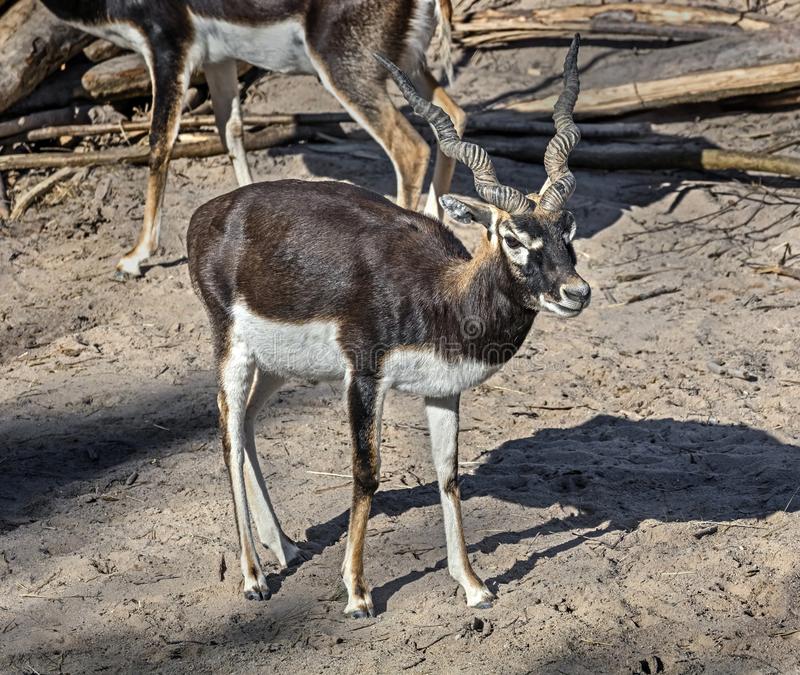ANIMAL: Blackbuck Antilope cervicapra Type of Animal: Antelope Habitat: Plains, grassland, open woodland, scrubland, semi-desert, desert, mountains, coastal areas, dry thorn forest, dry deciduous forest Location(s): Originally found throughout much of Indian subcontinent. Now, occurs mainly in India & small parts of Nepal & Bangladesh. Regionally extinct in Pakistan but reintroductions are occurring. Introduced populations occur in Texas & Argentina. Appearance: Dominant males darkest w/ dark-brown to black color on back, sides & outsides of legs. Subordinate males lighter colored but have spiral horns just like dominant males. Females lack horns & are more yellowish-brown. Both sexes have white undersides. Males lighter outside of breeding season. Food/Diet: Grass, leaves, pods, fruits, shrubs, flowers, cereals, grains, acacia trees, buds Status in Wild: Stable Conservation: Breeding in zoos, wildlife parks, breeding centers, & private ranches. Reintroductions into former parts of native range, such as Bangladesh, Pakistan, & Nepal. Lifestyle: Herds consist of dominant male w/ 5-50 females & young, sometimes w/ a few subordinate males. Other males form bachelor herds of 10-20 animals. Additional Info: Called: Male-Buck Female-Doe Young-Fawn/Calf Group-Herd Weight: Male-44-125 lbs Female-44-72 lbs Gestation: 5 months Height: Male-4-5 ft Female-3-4 ft Body Length: Male-4 ft Female-3.9 ft Life Span: 10-12 years Tail Length: 3.6-6.72 in, same for both sexes Main predators of adults in native range are tigers, wolves, dholes, leopards, lions, jackals, caracals, & formerly, the now locally extinct cheetah. Coyotes prey on adults in Texas & dogs chief predators in all their range. Wild pigs prey on newborns. Females give birth twice a year. While population stable & increasing, some threats are hunting for meat/sport/horns, overgrazing, bovine diseases, habitat loss, & inbreeding. Interestingly, in introduced range, they’re perfectly legal to hunt w/ no effect on population. Also, they’re persecuted as crop pests. These threats more prevalent in native range. Fights between males usually fairly ritualized. Fun Fact(s): They’re given religious protection in many Hindu cultures. There may be as many as 30,000 in Texas, on ranches & feral. Melanism & albinism have been observed in both wild & captive animals. Hand-reared males known to be very aggressive as adults. They’re very flighty. In the past, Indian royalty hunted blackbuck w/ help of cheetahs. They can run up to 50 mph.
